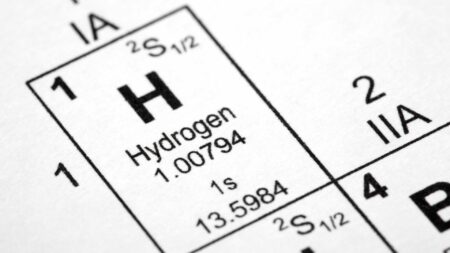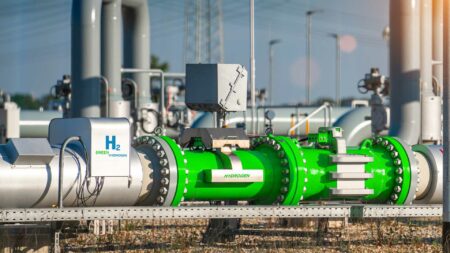GE Vernova’s Power Conversion business and Climate Impact Corporation (CIC) are collaborating to develop modular green hydrogen production systems.
These systems aim to reduce the production cost of green hydrogen to $2 per kilogram, leveraging renewable energy sources in a flexible, off-grid format. This article critically examines the partnership’s goals and the broader implications for the hydrogen energy sector.
The partnership between GE Vernova and CIC focuses on creating green hydrogen production modules that do not rely on local water sources or desalinated water. This approach could enable hydrogen production in regions with abundant solar resources but limited water availability. The flexibility and scalability of these modules are touted as key advantages, allowing deployment in various locations without significant environmental impact.
The target of producing green hydrogen at $2 per kilogram is ambitious. Current industry benchmarks indicate that the cost of green hydrogen production varies widely, often exceeding $5 per kilogram due to the high costs of renewable energy infrastructure and electrolysis technology. While the partnership’s goal is commendable, achieving such a low production cost will require significant technological advancements and cost reductions across the entire supply chain.
The Green Springs project in Australia’s Northern Territory is a flagship initiative under this partnership. This $10 billion project aims to produce over 500,000 tonnes of hydrogen annually from a 10 GW modular system. The project’s success will hinge on the scalability and efficiency of the modular technology being developed. However, large-scale projects often face challenges related to financing, regulatory approvals, and long-term sustainability, which must be addressed to ensure viability.
The environmental benefits of green hydrogen are well-documented, but large-scale production projects can still pose significant environmental and social challenges. The modular nature of GE Vernova and CIC’s technology aims to minimize land use and ecological disruption. Additionally, producing hydrogen without relying on local water sources could mitigate some of the water-related concerns associated with traditional electrolysis. However, comprehensive environmental assessments and community engagement will be crucial to ensure these projects do not inadvertently cause harm.








